Notes
Anatomy Of A Photograph
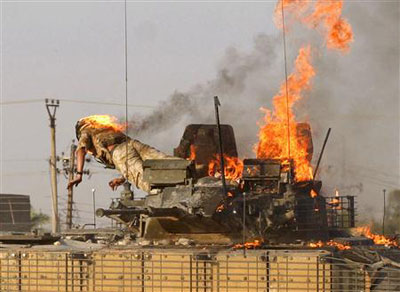
One thing I’ve been thinking about lately is the veracity of a news photo.
For example, consider the image that circulated a few weeks ago following a raid by the British on an Iraqi police station in Basra. Purportedly, the men were rescued because they were about to be turned over to a militant group. From most reports, such as this one from the Boston Globe, the British were confronted by an angry crowd of several thousand who attacked the tank and set it on fire.
Other stories, however, are less clear and even contain contradictions within the same report. In the Reuters account, for example, the soldier who was temporarily on fire said that the petrol bomb that hit the tank resulted from a lucky shot and that the flames were quickly extinguished. A Lieutenant Corporal, Jo McCann, was further quoted as saying that the news video made the incident look worse than it was.
Regarding the officers being held, by the way, an Iraqi Minister told the BBC that these men — who have also been reported to be undercover British intelligence officers — had never left police custody.
If the context of an international image can be fuzzy, meaning can be no less confounding on the domestic scene. Consider the following example:
If I understand correctly, the website zombietime
exists primarily to keep visual tabs on the left wing’s radical fringe.
(Now, why anyone would decide to take up such a mission — especially with a conservative agenda in San Francisco — is a mystery to me.) Nevertheless, zombie
recently published a piece of "forensic photojournalism" which is truly
to be admired. (It’s something I wish I might have captured if I was
actually working with a camera.)
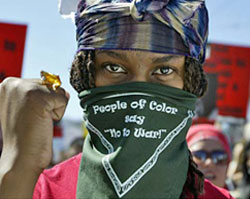
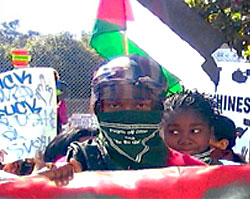
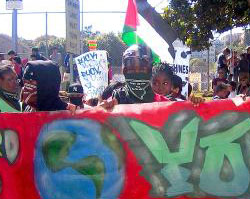
In the way of background, zombietime had been
photographing (diligently and comprehensively, as usual) the latest
anti-war rally in the Bay area. A day or two later, zombie happened to see a photo from the event on the San Francisco Chronicle‘s SFGate website that he also had chronicled — and much more comprehensively.
The analysis that ensued is a truly worthwhile lesson about news
images; about inclusion and omission; and about how much (or little) a
picture can be trusted to convey the reality of an event. The image
that the Chronicle
ran was just a larger version of the close-up of the girl with the
"people of color" kerchief above. Cropped as it is, she simply looks
like another anti-war protester who is proud of her race.
Because zombie had a whole slew of photos documenting the scene, however, what he managed to reveal (to the consternation of the Chronicle, the way it turned out) was a scenario that was less innocent and also less spontaneous than the Chronicle image would imply. Not only does zombie provide a more insightful look at this woman’s true agenda that day — zombie also asks whether the larger circumstances shouldn’t also have informed the SFGate photographer. What is especially interesting here is that zombie (albeit, in a somewhat antagonistic way) actually managed to draw the Chronicle into a debate about disclosure and photojournalistic integrity.
You can find the write-up, Anatomy of A Photograph, here.
(Basra referral: Sunil D’Monte.)
(image 1: Atef Hassan/Reuters. Basra, Iraq. September 19, 2005. reuters.com. image
2: Shelley Eades/SF Chronicle. September 25, 2005. San Francisco,
California. sfgate.com. images 3 & 4: zombietime.com. September 25,
2005. San Francisco, California.)
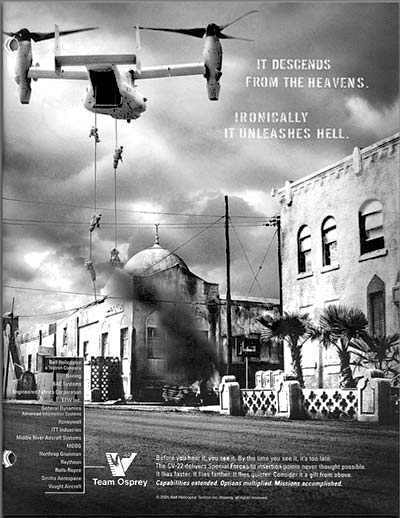
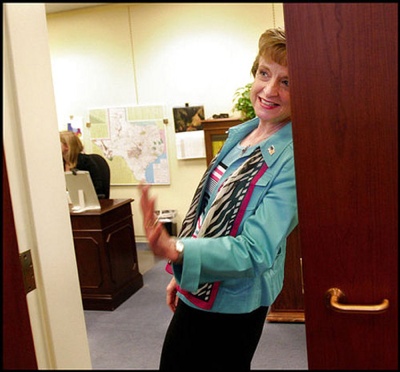
Reactions
Comments Powered by Disqus